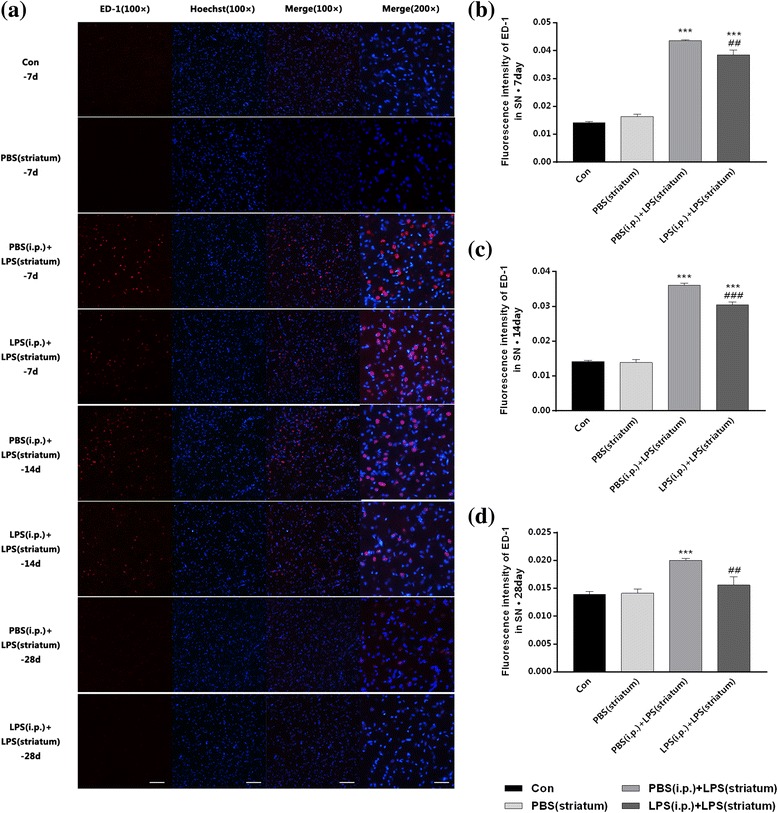Fig. 9.

Intracranial LPS injection-induced microglial activation was inhibited by peripheral immune tolerance preconditioning in the SN. Rats from four groups with or without peripheral LPS pre-treatment were sacrificed, and then, the brains were removed at 7, 14, and 28 days after striatal injection. The results displayed that peripheral immune tolerance pre-treatment relieved intracranial LPS injection-induced microglial activation with decreased fluorescence intensity of ED-1. a Immunofluorescence staining on frozen sections of ED-1 (red) and Hoechst (blue) in the four groups of our observation. Since the control group and the PBS (striatum) group were not statistically significant at each time point, we selected 7 days as a representative. b–d The bar chart to display the fluorescence intensity of ED-1 (n = 3, each group). ***P < 0.001 vs. control group. ##P < 0.01, ###P < 0.001 vs. PBS (i.p.) + LPS (striatum) group. The data are presented as the mean ± SEM. Scale bars, 100 μm (100×) and 50 μm (200×)
